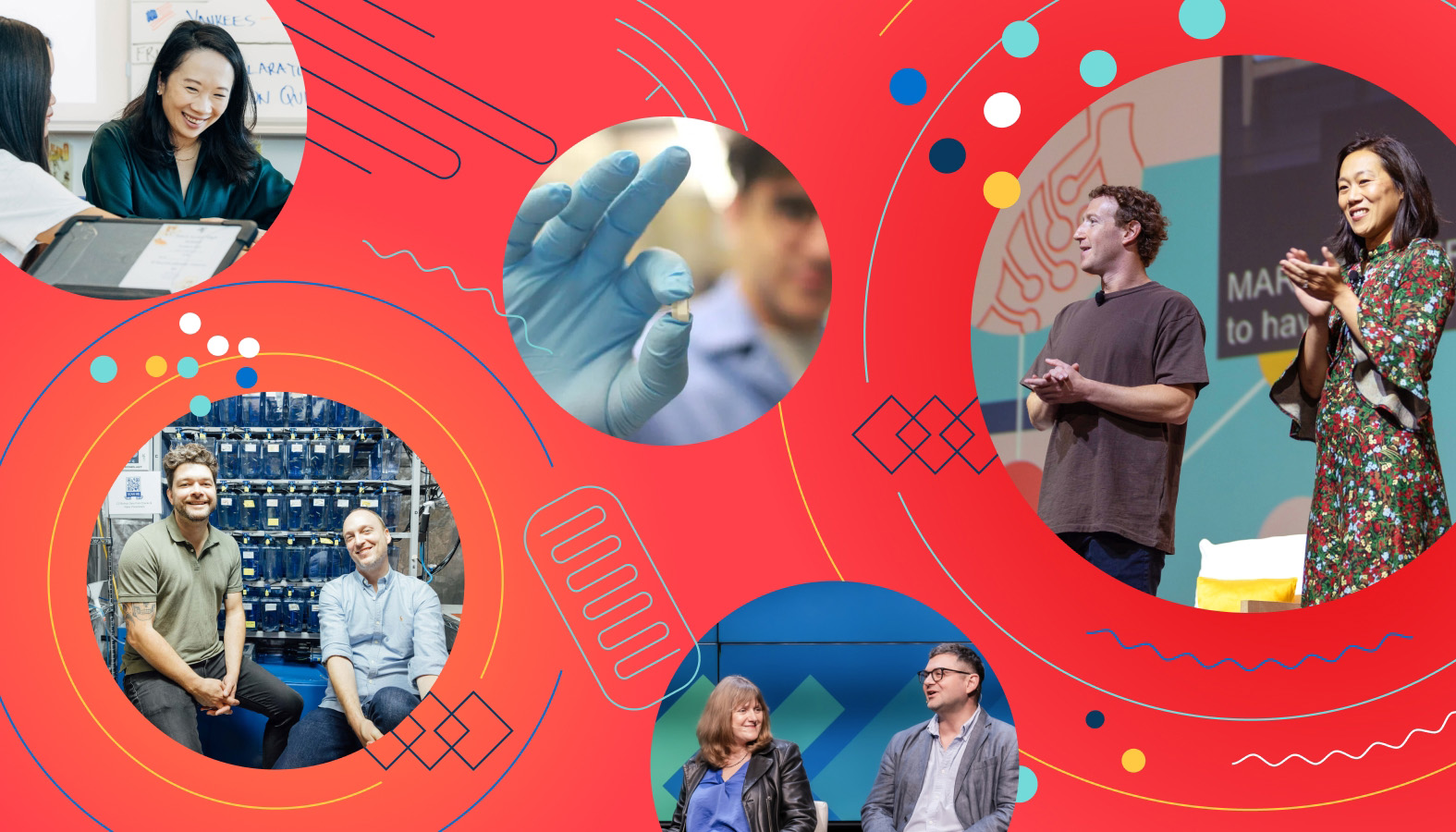May 29, 2020 · 26 min read
In San Mateo County, Nonprofits are Leading COVID-19 Response
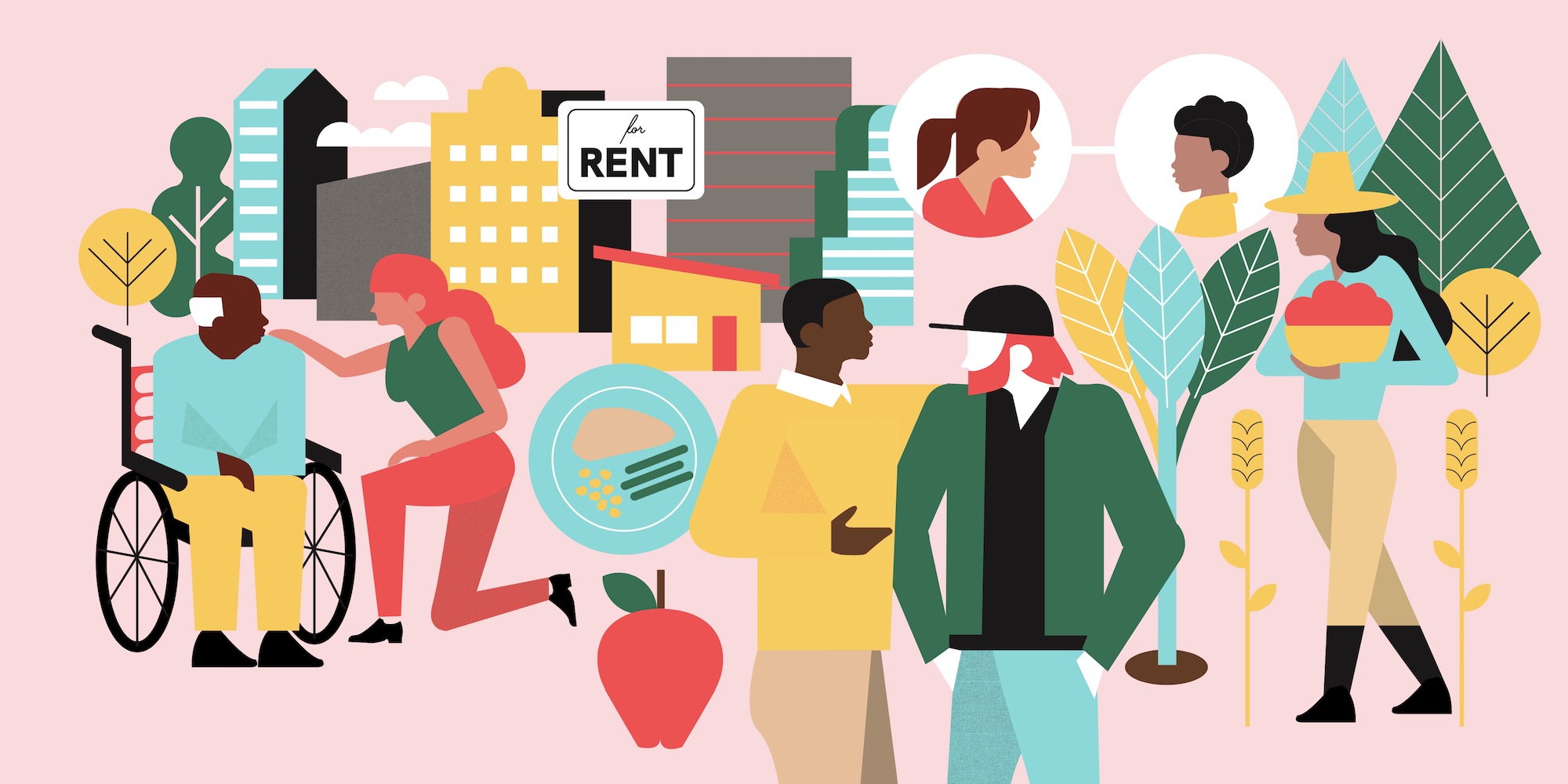
While COVID-19 began as a public health emergency, it has evolved into a crisis that has thrown almost every part of daily life into chaos. For people who’ve lost a job, the pandemic has also become an economic crisis. For those who can no longer afford rent or a mortgage payment, COVID-19 has become a housing crisis. Without a steady paycheck, millions of families are straining to put food on the table. And without access to the internet, millions of students are struggling to participate in at-home learning.
The picture that emerges is one of cascading crises, where people who were already vulnerable to one kind of shock are now vulnerable to many. And that’s exactly what we’re seeing here in the Bay Area. Families experiencing homelessness, for example, have long been locked out of the region’s housing market. Now they have little shelter from the virus. Undocumented immigrants, meanwhile, are ineligible to receive federal assistance, leaving them especially susceptible to financial catastrophe.
In this way, COVID-19 is tearing at the holes in America’s social safety net. But it’s also revealing the heroic work people do to hold it together. Local nonprofit organizations, many of which have been serving their communities for decades, have emerged as some of the most powerful forces for response and recovery during the crisis. And many of them have reinvented themselves along the way.
One of those nonprofits is Daly City Partnership. Prior to the pandemic, it provided a wide range of services in northern San Mateo County—but when requests for food and shelter increased by fivefold or more, the organization pivoted toward providing the basics. “We are the back-up emergency plan for the community,” explains Pat Bohm, Executive Director of the Partnership.
Other organizations are working to meet emerging needs in their communities. When schools in San Mateo County’s South Coast switched to at-home learning, for example, some students were getting left out because they didn’t have access to the internet. It wasn’t long before a local nonprofit, Puente de la Costa Sur, began circulating hotspots and advocating for internet access for their community.
As these organizations strive to do more with less, they’re also coming under strain themselves. Some staff members worry about their personal health, especially when they’re out distributing supplies to members of the community. Other workers, many of whom are parents, are shouldering heavy burdens at home—adding teaching and caregiving responsibilities to their already full schedules.
It is this last thought that most worries Rita Mancera, Puente de la Costa Sur’s Executive Director. She’s quick to note that nonprofits will need support over the long haul. “They’re going to need it throughout the entire pandemic and then through the recovery process,” she says. “Otherwise, these types of essential services that we provide will go away or get reduced—and I don’t think our community can afford that.”
In moments like these, the power of community becomes more important than ever. Organizations working to keep our communities healthy and safe need support—not just now, but for many months to come.
At the Chan Zuckerberg Initiative, that’s exactly what we’ve been doing in the San Mateo County community we call home. We’ve been proud to partner with Puente de la Costa Sur, Daly City Partnership, and many other local organizations in the time before COVID-19 hit. Now we’re working in close partnership to build capacity to respond to the pandemic, and the other crises that have followed in its wake.
In that spirit, we’d like to introduce you to a few of our grant partners. Together, they’re working across San Mateo County to tackle the most pressing challenges in their communities, from homelessness to mental health. You can read an interview with each of these organizations below, and learn how you can get involved with their work.
CASSY: Ensuring Access to Mental Health Services for Bay Area Students

Experts estimate that 20 percent of young people experience a mental health issue during a given year. Many of them struggle to get help—which is why Counseling and Support Services for Youth (CASSY), a nonprofit serving Santa Clara and San Mateo counties, goes into schools to provide it.
We spoke with CASSY Clinical Director Elena Cacace, LMFT and School-Based Therapist Sara Feldman, LCSW to learn about how the organization is adapting during the COVID-19 crisis, and how all of us can better support students, and student and family mental health, in the months ahead.
In the past, how has CASSY approached its work to ensure students have access to mental health services?
Elena: We’re in our eleventh year now. CASSY began in East Palo Alto, when a couple of therapists said, “Look, there’s a need to have [mental health] services in schools.” And CASSY was created. We’ve grown since then; we’re now in close to 70 schools through Santa Clara County and San Mateo County.
Each district is unique. We see everything from severe academic stress to crisis situations where children are depressed and can’t cope. There are some areas where poverty and safety needs are the biggest issues. It’s such an array. We are school-based, so we get to see the kids on campus, where they’re at most of the week.
Sara: I think the school-based model works so well for our families because they just don’t have the resources [or] time to get their kids into other kinds of counseling. I work in a dual-language immersion school and a lot of my families don’t speak English, so there’s an even bigger barrier for them.
What happened when schools started to close? How did CASSY reimagine its work?
Elena: At first, we had to scramble. But all of our therapists are now providing services [over phone or video calls] to their original caseloads, and any additional kids that are in need.
We’ve also done other things, like create the CASSY care kit, which provides techniques for mindfulness, self-care, and ideas to help families bond. One of our board members gave a presentation to parents and high schoolers about how to navigate through this pandemic. So, we’ve been creative, and we’ll continue to [be] as we figure out how to support the kids.
Sara: It wasn’t just CASSY that had challenges at the beginning. The schools had the challenge of getting students connected, especially in our district, because [many] families didn’t have computers or the internet. So once we were able to get approval for Chromebooks to be released to families, [along with] iPads and hotspots that were donated, we were able to connect over video with a lot of the kids.
Young people are experiencing this huge loss of normal life right now. Their peer group is who they really care about. So we’ve been working on different ways to help them still have the social component that’s been missing.
What long-term changes are you anticipating, both for students and for CASSY itself?
Elena: School districts still have no idea what August holds, so we have no idea what our services are going to look like. We’re looking at everything from reentering schools to having all-remote [counseling]. We’re looking at increasing family services, [because we’ve] seen the struggle some of our families endured during the shelter-in-place.
Sara: I do think bringing in the families will be really important. We’ve been doing a lot of trauma-informed, trauma-sensitive trainings in my school, because we know that there has been a lot of trauma, [including] intergenerational trauma, in this district. I think we’re going to have to be incorporating more of that—the social and emotional learning components, and being really aware of what everyone’s gone through. Including the teachers. I’ve worked with the principal to do a lot on self-care for the teachers.
CASSY’s own staff must be under a lot of pressure, too.
Elena: Definitely. A lot of our therapists are struggling with anxiety, fear, not having day-care [for their own kids]. Our program managers and our supervisors are amazing and supportive. They have worked with our therapists, both one-on-one and in groups, and given them an outlet to share [their challenges]. And as a whole, we’re trying different things, different trainings, to support them.
Sara: The transition to being a stay-at-home mom and a full-time working therapist was pretty intense for me. My supervisor really worked hard with me and asked me what would be helpful. CASSY really believes that even therapists should have a work/life balance and that we should be able to take care of ourselves.
Is there anything else you want people to know right now?
Elena: [There are still] a lot of stigmas around mental health, and CASSY is working to change this. We recognize that everyone needs support in one way or another. And we need to ask, what are the ways we can help or support them, especially children and youth. If we can teach a child how to handle stress and be more resilient, and learn how to navigate the world, they’re just going to do better in life.
Sara: What we’re doing in CASSY is preventative work that can’t necessarily be measured. But we do know that having a positive adult relationship for a kid can be invaluable in helping them to have a healthy life. And whether that’s a therapist or a parent or a grandparent or whoever, I think in this time it’s really important for us to realize, as adults, we can be that. But we can only be that if we take care of ourselves.
LifeMoves: Helping Bay Area Families Experiencing Homelessness

While many Americans have been able to shelter at home during the COVID-19 pandemic, people experiencing homelessness have not. LifeMoves, the largest nonprofit of its kind in San Mateo and Santa Clara counties, is working to ensure they get the support they need during the crisis—and that they have a viable pathway back to stable housing and self-sufficiency.
We spoke with Dr. Brian Greenberg, Vice President of Programs and Services, and Samantha Peterson, Director of Marketing, about how LifeMoves is responding to COVID-19, homeless support in San Mateo County, and what we can all do to help.
Historically, what communities has LifeMoves been working to reach?
Brian: Pre-pandemic, we served about 125 families every night, all homeless families from the peninsula and Silicon Valley. Many are three-generation families, some are two-parent families, some are one-parent families, but they all have accompanied minor children. We also serve over 400 single adults that are homeless every night in shelters. About one in five of our residents is a U.S. Veteran.
The LifeMoves model is all about throughput. Whether people are in our safe parking lots, in motels, in our shelters, or visiting our drop-in center, the idea is moving [individuals and families experiencing homelessness] through the system, exiting homelessness, and securing permanent housing.
How has the pandemic affected your staff?
Brian: It’s caused us to work both in a crisis mindset where everything is suddenly really important, and, at the same time, refocus our staff to understand that once shelter in place is over, nothing is going to change. They’re still going to be working in a high-risk situation, we’re still going to have to be wary of contagion, we’re still going to have to have quarantine space in our shelters, we’re still going to have to have a supply of personal protective equipment.
We’re both in a crisis mindset and preparing for next winter and next spring. Because we can’t let our guard down.
How has COVID-19 affected the populations you serve?
Brian: Whenever the community catches a cold, the homeless population gets the flu. The most vulnerable people always get it the worst. That’s what we’re seeing now: poor and vulnerable populations are always hit harder.
Our people can’t work from home, they are not tech workers. They’re in low-wage service-sector jobs, and those are the jobs that have disappeared at a higher rate than tech jobs or white-collar jobs. Most of our people, both homeless families and individuals, most of them were employed. They weren’t making enough money to pay rent, and they weren’t always working full time, but they were working, and that structure of work is so important for all of us, right? It’s not just that you’re making $200, $300 a week in a part-time job, it’s that it provides structure for you, and that structure is a guard against depression, against anxiety, against isolation.
And so, when those part-time jobs or service-sector jobs go away, all the psychological stuff, the depression, the anxiety, is just more of a struggle for our population. Work is more than a paycheck. Work is about self-esteem and structure and self-worth.
Have there been any bright spots during this pandemic?
Brian: Every child [over two] that comes into LifeMoves and every adult that’s enrolled in educational programming gets a Chromebook. And every child this summer will have a literacy program. We are intent on using this as an opportunity to encourage adults to enroll in post-secondary education or training programs, and for children to really improve basic math and reading skills, especially reading skills.
Another thing, we’ve been very successful with housing people through the pandemic. Landlords want to keep their units filled. So, our housing specialists are continuing to house people.
How can people support your work and your community?
Samantha: As people start to focus on coming out of sheltering in place and getting back to some sense of normalcy, whatever that might look like: that won’t happen for us. We’re going to really need to stay in these emergency efforts for the long term to make sure that we continue to protect our community both within our shelters and outside of our shelters.
I think our biggest concern is that people’s attention will go elsewhere, but our fundraising needs and our client’s needs, they’re not going to slow down, right? So that’s our biggest message that we want to put out there right now.
Puente de la Costa Sur: Serving Communities on San Mateo’s South Coast
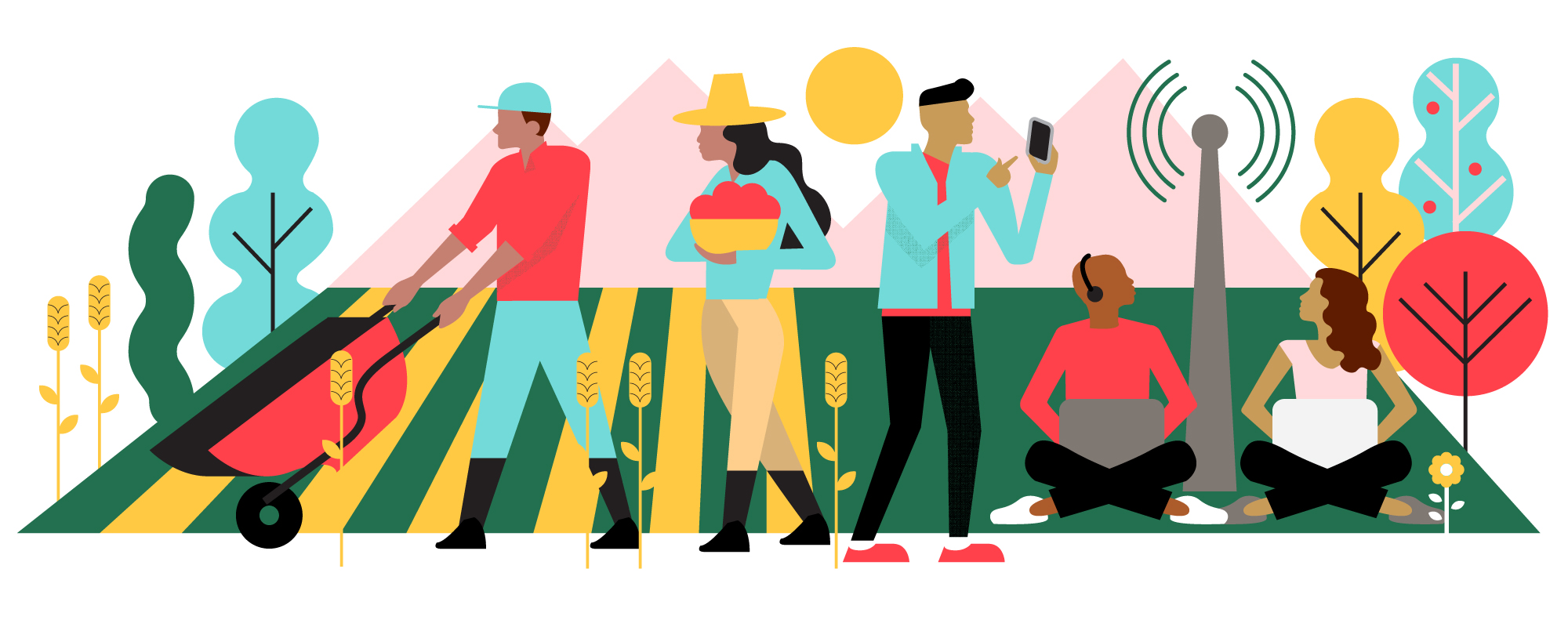
One of the most pernicious effects of the COVID-19 pandemic is that it is widening existing inequities in society. People who were at a disadvantage before—who didn’t necessarily have a stable income, housing, or internet connectivity—are at a greater disadvantage now.
Puente de la Costa Sur has long worked to fight that kind of inequity on San Mateo County’s South Coast, and to help build a healthy, sustainable, and inclusive home for the region’s communities, including farmworkers. We spoke with Rita Mancera, the organization’s executive director, about how that work has evolved during the COVID-19 crisis.
Historically, what communities has Puente de la Costa Sur worked to serve?
Rita: The area that we focus on is the South Coast of San Mateo County. We provide services and engage with community members in the unincorporated towns of Pescadero, La Honda, Loma Mar, and San Gregorio. Geographically, it’s pretty vast; there are about 64 square miles that we cover, and that is very challenging. Everything takes longer for us to provide.
How have the community’s needs shifted in the wake of the pandemic?
Rita: Right after shelter-in-place [was announced], about 75 percent of the phone calls that we received were related to health, financial support, and food. So a food distribution program was one of the first things that we had to start; [we’re now] distributing food once a week.
Another need we’ve seen is around connectivity. School, of course, is not in session, [and students are] doing distance learning. Early on, the school realized that many of the students were not connected. And so, we distributed hotspots provided by the Half Moon Bay Library to families who were not connected to the internet, or those that had multiple students at home who were using their one phone as a hotspot. People really appreciate them.
There are at least three farms where these [hotspots] don’t work, though, and it’s just so frustrating. Being so near to Silicon Valley, we should have an answer for connectivity for these rural areas. But we don’t. These are the kinds of things that create inequity among those who have and those who do not have.
Puente’s workforce must be under a lot of pressure right now. What’s it been like?
Rita: The team has always been the secret sauce behind Puente. For the first month, we checked in every day over Zoom. Now, we check in three times a week. Some days it gets hard. Sometimes I see the team just going and going and I have to encourage them to take a break. We are advocating internally for self-care. People that are in this field—they’re generous people, so we’re giving more, but it’s been hard.
What do you think this crisis will mean long-term for the communities that you serve?
Rita: The economic impact is going to be big. [So will] the emotional impact on this generation of students. Because it’s not about the assignment, and it’s not about just getting a grade, and it’s not just about turning in the papers. It’s about how they continue to develop themselves as human beings—learning, interacting, and learning from those interactions. I don’t think that we can assess [how remote learning will change] that yet.
Is there one thing that you want the larger community in the Bay Area to know?
Rita: I hope that someone that reads this story tries to see it as a way to connect our community to the internet. That alone is going to create a lot of disparities for the younger generation. And so I hope that someone can develop a solution for this rural area.
[I also think] people who have the ability to support organizations like ours—and the many others in the Bay Area—are going to be key for sustainability. It’s going to be very important that they continue supporting these organizations during this time. So far, the response has been really great. We saw it in a recent fundraising campaign, [where] we lost some donors but those with capacity gave more than usual, and that helped Puente reach its goal for youth programming.
Foundations are stepping up too. In some instances, we’re being called by foundations or by donor-advised funds that want to contribute to the COVID-19 relief fund that we created.
But it has to continue. My fear, honestly, is that people are encouraged to support right now, [but that they’ll stop giving] in the fall. I like to remind people that organizations don’t just need support right now; they’re going to need it throughout the entire pandemic and then through the recovery process. Otherwise, these types of essential services that we provide will go away or get reduced, and I don’t think our community can afford that.
Daly City Partnership: Meeting Extraordinary Need in Northern San Mateo County
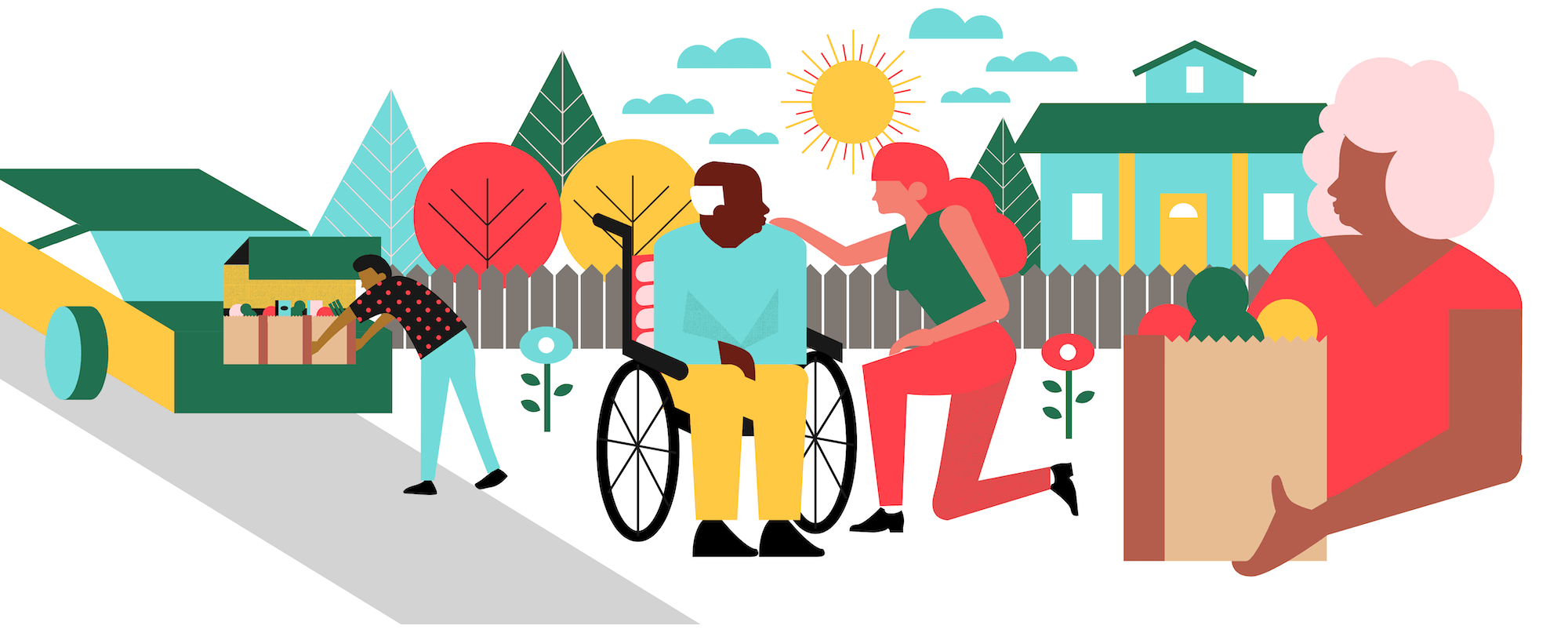
COVID-19 has required communities to stay apart, but nonprofits like Daly City Partnership have not stopped connecting community members to essential services. Daly City Partnership was founded in 1995 to help connect the northern San Mateo County community to services that promote well-being.
We spoke with Pat Bohm, the Executive Director of Daly City Partnership, about what her organization is doing in the midst of the pandemic, and what you can do to support Daly City Partnership and the vulnerable communities it serves.
Before the pandemic, what communities did you serve and what services did you provide?
Pat: We started off by providing after-school tutoring, homework assistance, and enrichment programs in the arts and sciences in order to broaden education for public school students.
Then, we built a family resource center in partnership with First 5. We have an on-site state-subsidized preschool, parent education programs, licensed marriage and family therapy, and group therapy.
We took on more social services as we grew as a community collaborative. We formed a Healthy Aging Response Team (HART), which responds to the needs of seniors in our community. And we manage a Core Safety-Net Agency that not only is an entry point for anyone in San Mateo County needing emergency shelter, food, and clothing, but also provides emergency financial assistance programs. We’re very, very busy these days.
How has your work gotten busier since the pandemic began?
Pat: While many services shut down because of shelter-in-place, we continued to operate. We are the back-up emergency plan for the community.
Everyone is still in need, but it’s shifted to a new outgrowth of families requiring the basics, especially food. Through HART, we originally were providing in-home meal deliveries to about 35 clients. Now we’re up to over 160. At our community center, we went from about 10 or 15 people a day coming in for emergency food, to 200 to 300 a day. And we shifted to a drive-up delivery method where we can put the food pre-boxed by Second Harvest Food Bank right into trunks. Now, there are four other hubs for food distributions in Daly City, and that has helped alleviate the need. Are we making ends meet for these families? I don’t know. We’re hopeful that it at least helps.
The request for shelters for individuals and families has more than doubled, from about two a day to 10 a day. Immediately, we used our emergency funds to put families up in a motel if there wasn’t room in a shelter or if they were on a waitlist. Now, things are stabilizing. All the families are being put up either at a shelter or in motels. There is still a waiting list for individuals, but San Mateo County recently opened up another temporary, non-congregate shelter for homeless individuals in the COVID high-risk category.
Rental assistance has also gone through the roof. We used to process about 10 applications a month; we are currently at 300 applications. We went to an online system to apply so that we’re avoiding personal contact. Rental assistance is kind of like applying for a bank loan; everything has to be documented. It’s a lengthy process, and it can be very frustrating for our clients who are currently in crisis mode. One good thing is that San Mateo County has a moratorium on rental evictions for non-payment through May 31st, and our hope is that this will be extended well into the summer. Having to come up with the full rent as of June 1st would be impossible for someone without a job these last few months.
How has all of this affected your staff?
Pat: Originally, when this happened, my staff was under a lot of stress. We gave them one day off a week to deal with everything. We hired additional staff and authorized unlimited overtime. We worked with our partners to try to get all the volunteers we could. We quadrupled our volunteer workforce. That’s been a blessing. Also, thanks to some generous grants, we were able to give our staff hazard pay; $4 an hour extra because they’re on the front lines.
Still, our staff is under a lot of pressure. We have a meeting every Thursday to go over cases, and there are a lot of tears because they feel so deeply for their clients.
How do you think this will affect the communities you serve in the long term?
Pat: People are giving up hope. We’re hearing a lot about the stressors that families are going through and people not knowing if they’re going to have a job to go back to.
I’m worried about learning loss, too. All the preschools are out; there’s only virtual learning. But the socialization that they’re not getting is such a big loss because kids learn from other children. Fortunately, our school district is going to conduct summer school with smaller classes. Normally, students have four months or more of learning loss during the summer, but with our summer ‘BLIS’ program, there’s two or less.
How can people support your work and your community?
Pat: On our website, www.dcpartnership.org, anyone can register to volunteer and come out to help with food distribution or do some pre-screening calls with our rental assistance clients. They can also donate to our COVID-19 Relief Fund, which goes directly to our elementary and middle school families who are struggling to make ends meet and don’t have income right now.
Nuestra Casa: Supporting Families in East Palo Alto and the Mid-Peninsula
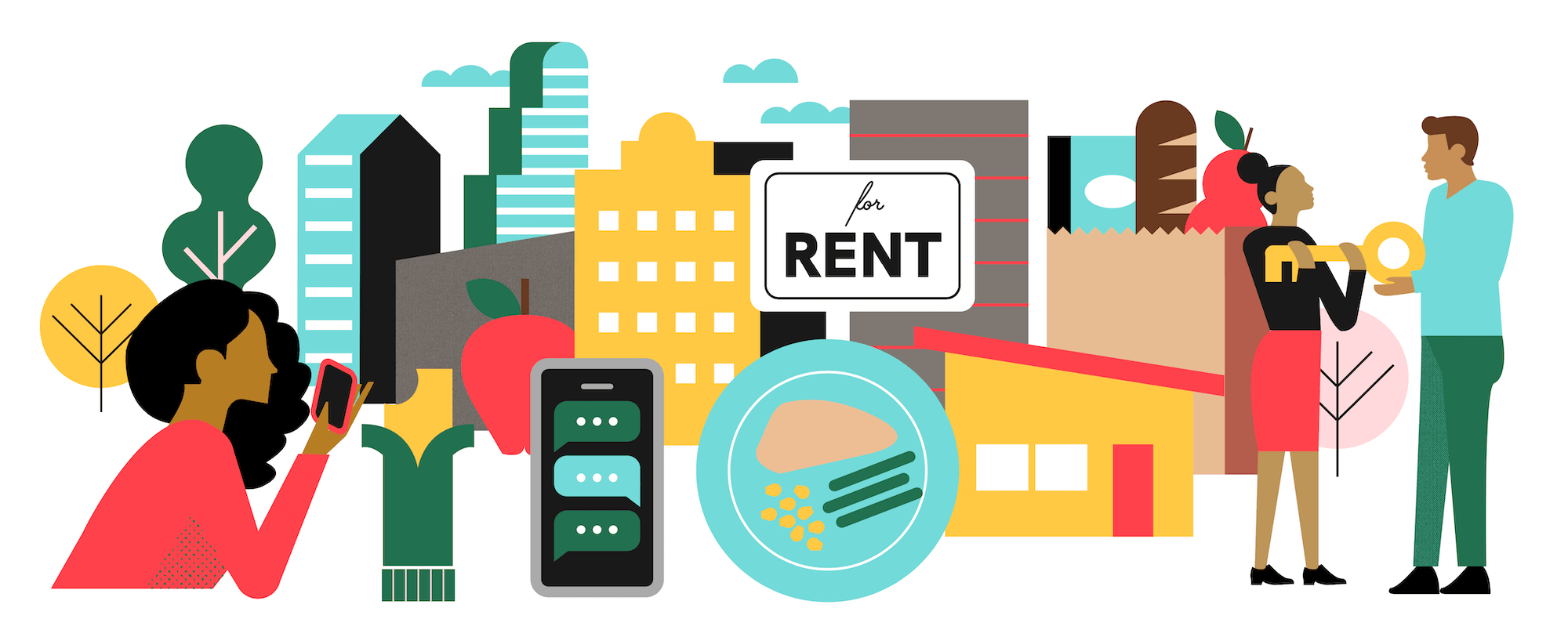
As San Mateo County grapples with the COVID-19 pandemic, local nonprofits are going to extraordinary lengths to ensure that people get the support they need. Nuestra Casa is one such nonprofit; founded in 2002, its mission is to uplift Latinx families in East Palo Alto and the mid-peninsula through community education, leadership development, and advocacy.
We spoke with Miriam Yupanqui, the Executive Director of Nuestra Casa, about how her organization is responding to COVID-19, how the community it serves is adapting, and what readers can do to support Nuestra Casa’s work.
Historically, what communities has Nuestra Casa been working to reach?
Miriam: For the past 18 years, our mission has been to specifically serve the needs of the most vulnerable populations in the mid-Peninsula. We exist to uplift the voices of the underserved and low-income populations in East Palo Alto, Belle Haven, and North Fair Oaks. These communities are mostly composed of Latino, African-American, and Pacific Islander families who work in the service industry.
How has your work shifted since the start of the pandemic?
Miriam: We are fortunate that most of our programming continues to operate. We continue to run our Food Distribution Program on Wednesday evenings and Saturday mornings. We’re taking all of the safety precautions that are necessary to continue this work, as it is considered an essential service.
Since the pandemic started, we have noticed that demand for our food program has doubled, and in some instances, tripled. We are working with our partners at the Second Harvest Food Bank, Copia, and Costco to ensure that we have a system in place to meet demand during the pandemic and after.
When it comes to our outreach and advocacy work, these efforts have gone virtual and are led by our outreach team and our Promotoras. Our Promotora Program is composed of community outreach workers who live in the communities that we serve and understand the most pressing challenges. Traditionally, these individuals interact with community members on a one-on-one basis via community fairs and presentations at schools and partner organizations. We have shifted our Census 2020 and immigration education outreach work to a remote strategy that incorporates social media engagement and a phone banking system. We are using our Facebook and Instagram platforms to engage with community members and share pertinent information.
How has the pandemic affected your organization internally?
Miriam: Our work is still focused on our mission, but our strategies have shifted. Internally, we have adapted to new technological tools, such as Zoom, Google Hangouts, Slack, and Twilio to communicate as a team. A few staff members are working 100 percent from home. However, individuals who run our Food Distribution Program are out there on the front lines. We are practicing social distancing guidelines and wearing protective gear when we engage with community members via the Food Distribution Program.
How do you think the pandemic will affect the communities that you serve over the long term?
Miriam: As it happens with other diseases like diabetes or heart disease, most of the affected live in communities like East Palo Alto, which are predominantly composed of low-income and minority populations.
I worry about the health and safety of the community members we serve, as many of these individuals have essential jobs. I am also very concerned about individuals who are currently unemployed and unable to pay rent, particularly the undocumented population. I feel that this pandemic really brings up the most pressing issues that were already in place before the pandemic. Individuals in East Palo Alto were already worried about affordable and stable housing. They were already worried about food security and healthcare access, and this pandemic lets us know that these issues continue to be a priority.
As the leader of Nuestra Casa, these challenges keep me up at night. I’m constantly thinking about how we can support these individuals to a greater extent. At the moment, we do not have a program in place to help with financial assistance, but we’re able to alleviate some financial burdens by bringing food to the table and referring families to organizations that can provide financial assistance. Regarding the housing piece, we will soon begin a collaborative project that will protect tenants in East Palo Alto. But I’m also thinking down the road. How else can we support our families who will continue to suffer financially and emotionally after the pandemic?
What are some ways that readers can support the important work that you’re doing on the ground? How can people get involved?
Miriam: The number one thing that I’m focusing on right now is spreading Nuestra Casa’s visibility, particularly at the corporate level. We have been in Silicon Valley for 18 years and there are individuals and corporations who do not know about Nuestra Casa’s important work.
There are various ways that individuals could support our organization. They could support our COVID-19 Crisis Fund, volunteer in one of our Food Distribution sites, or follow us on our social media platforms.




